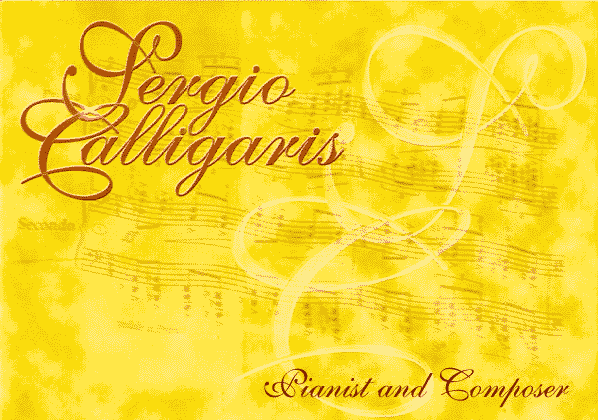 CLASSIC RECORD LIBRARY
CLASSIC RECORD LIBRARY
FAMOUS ENCORES
[LP: EMI - His Master's Voice, stereo 053/17973]
Side One
1) - Chopin
Polonaise in A flat major, Op.53 "Heroic"
2) - Schumann
Soaring, Op.12 N.2
3) - Rachmaninov
Prelude, Op.23 N.5
4) - Debussy
Fireworks
Side Two
1) - Liszt
Hungarian Rhapsody N.6
2) - De Falla
Ritual Fire Dance
3) - Granados
Spanish Dance N.5 "Andaluza"
4) - Vitalini
Scherzo 1955
Sergio Calligaris, piano
Recording Engineer: Ulderico Merluzzi
A Radio Vaticana recording
The pieces of music contained in this record can't be properly considered as
"encores" after all: the dimensions of each single piece are such to exclude
that a pianist, after an entire recital, would take more on the performance of one of the
eight pieces performed here by Sergio Calligaris.
This title, on the other hand, is intended to indicate a feature common to each of them,
their popularity: also a piece performed "on request" by the pianist has
actually to catch the audience, especially thanks to its popularity.
Polonaise "Heroic", with which this record opens, written in 1843, has always
been performed as an army of soldiers marching to liberate Poland. It's about, more
simply, a "work of art", insisting on the word "work" intended as a
piece of work, of making, of lucid setting into form of a basic inspiration that, without
such a work of processing, wouldn't have anything but the consistence and the value of a
sigh.
Schumann's Soaring is the second piece of his Fantasy Pieces, a collection
of eight short piano compositions written in 1837 with strict autobiographical intentions:
in that time Schumann was committed to conquer Clara Wieck and, above all, to obtain from
the girl's father his approval to wedding.
Prelude No.5 in G minor op.23 "March". This is the complete title of
Rachmaninov's prelude belonging to a series of ten written by the Russian composer in
1901. The number 5, one of the most popular after the famous Prelude in C sharp minor,
impresses especially for that central section, oriental-like in mood, lightly recalling
Borodin's "In the Steppes of Central Asia".
The pieces entitled Fireworks by Debussy belongs to the second book of his
Preludes, a collection of twelve compositions created by the French musician from 1910 to
1913. Firework is all a crackling virtuosism, externally cheerful, sparkling in
people delight. But, suddenly the notes of the Marseillaise appear and since then the
typical melancholy of the end of feasts arises.
The word Rhapsody, nowadays indicating an instrumental fantasy upon generically folk
themes, was carried to its maximum diffusion by Franz Liszt with his Hungarian Rhapsodies,
the sixth of which, in D flat major, is included in this record. On the whole, the Twenty
Hungarian Rhapsodies employed Liszt from 1851 to 1886 with many breaks; the first series
was composed by fifteen pieces and the second by five. Liszt kept in his rhapsodies the
Hungarian character using both the typical dance forms: the slow and melancholy Lassù
and the lively and passionate Friska. And it's exactly this last one which gives a
tone of virtuosism to the whole Rhapsody No.6.
The Ritual dance of fire by De Falla is the most known piece of the great ballet El
amor brujo, composed by the Spanish musician for the gipsy dancer Pastora Imperio and
staged for the first time in 1915. Later on De Falla himself transcribed for piano the
orchestral page of the Dance of fire, mantaining the same sinister and gloomy tone
and the Andalusian trait of music.
Granados' Twelve Spanish Dances are the work of a prominent musician. Written in 1893,
most of them bring also a subtitle; the fifth, nowadays the most popular, is entitled Andalusian
and its indicated tempo is Andantino, quasi allegretto; it opposes in a very
peculiar way minor and major tones in an oriental-like atmosphere, made more appreciable
by the typical Andalusian guitar accompaniment.
The last piece of the record is the Scherzo 1955 by Alberico Vitalini, the current
Director of the Vatican Radio music services. A piece in which the author, other than the
meticulous care of virtuosism, can also instill a deep lyrical inspiration.
Text by EMI Italiana S.p.A.

